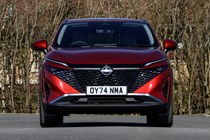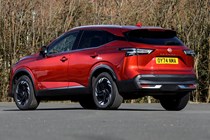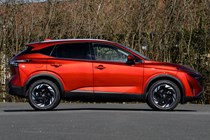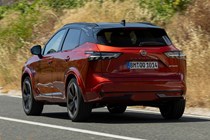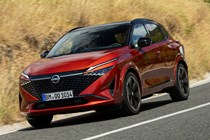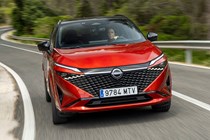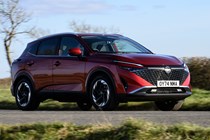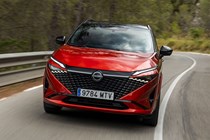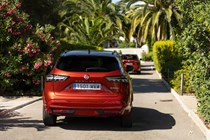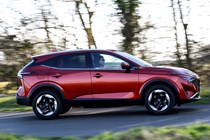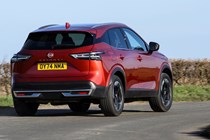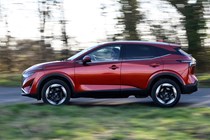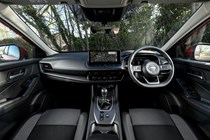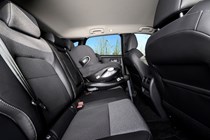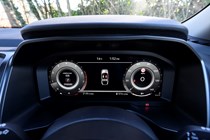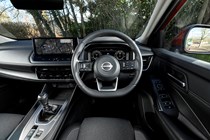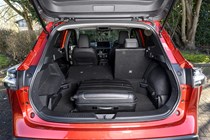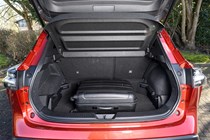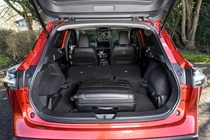
Nissan Qashqai running costs and reliability
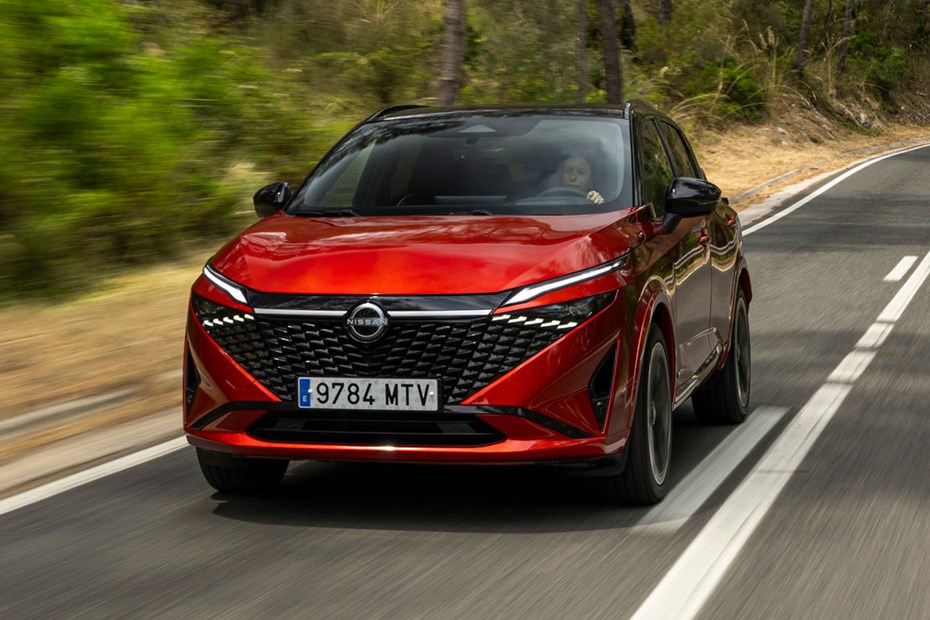
Miles per pound (mpp)
| Petrol engines | 5.9 - 6.7 mpp |
|---|---|
| Hybrid petrol engines | 7.5 - 9.2 mpp |
Fuel economy
| Petrol engines | 39.9 - 45.6 mpg |
|---|---|
| Hybrid petrol engines | 51.4 - 62.8 mpg |
- Unsurprisingly, the E-Power is the most frugal
- Mild-hybrid manual is the least efficient
- Reliability issues of old Qashqai fixed
What are the running costs?
That depends on which Qashqai you opt for. We’ll start with the 1.3-litre mild hybrid models. Both versions of the engine have very similar fuel economy and CO2 figures, as they share the same displacement and components.
In official WLTP testing, both engines return around 44mpg and between 142–145g/km of CO2. Whether or not you can achieve those figures in the real world depends entirely on your choice of gearbox and your driving conditions.
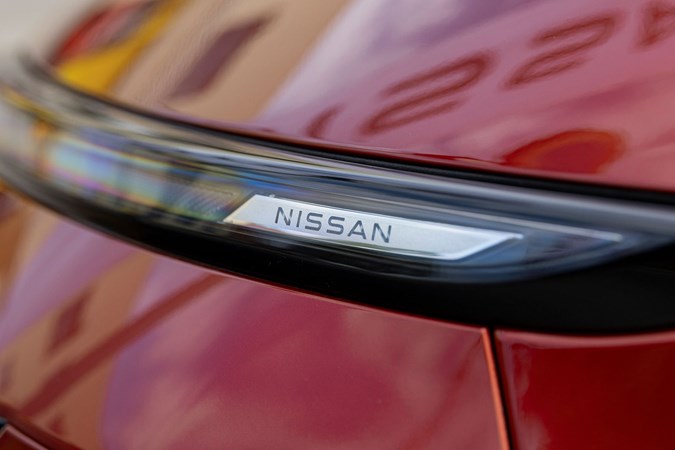
For example, we spent a week behind the wheel of an automatic 158hp Nissan Qashqai Tekna+ and it returned a very impressive 47.1mpg with a mixture of town, fast A-road and motorway driving. We didn’t work especially hard to achieve that figure, either.
The manual is a completely different story. Because the gearing is so long, you can’t shift up very early – and that means you need to work the engine harder at slower speeds. As a result, our manual Qashqai returned a less than 30mpg in town and A-road driving.
It’s also worth noting the optional all-wheel drive system available on the 158hp engine uses more fuel. Nissan says it’ll return 40.9mpg, with CO2 emissions of 155g/km.
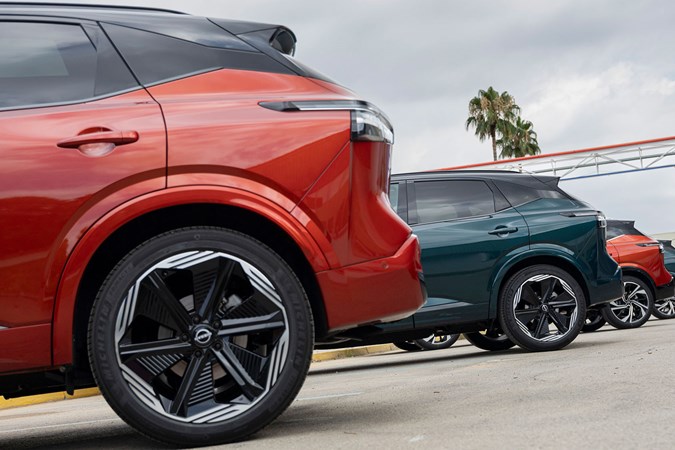
Nissan’s new E-Power hybrid system is, unsurprisingly, the most economical. Claimed CO2 emissions are 102g/km (15g/km down on the old system), while its average official fuel economy figure is 62mpg (around 7mpg better than before). I averaged roughly 50mpg without trying to drive especially economically.
Like before, it’s noticeably more efficient around town as it can lean on its electric driving capability more. But when you get on faster roads the fuel economy falls to that of the mild hybrid automatic.
Servicing and warranty
Mild hybrid Qashqais need to be serviced once a year or every 18,000 miles – whichever comes first. Oddly, though, the E-Power hybrid requires more regular maintenance.
The old E-Power needed to be serviced every 9,000 miles, but Nissan has stretched the new car’s service intervals out to 12,000 miles. However, to try and eke the best economy out of the engine, Nissan’s engineers recommend you run it on a frighteningly thin 0W20 oil. That’s only a couple of steps away from water, so we’ll be monitoring this new engine for any reliability issues.

Nissan offers a range of monthly service plans to help you spread the cost of maintenance and avoid big bills. Given the current rate of inflation, this is something we’d always recommend.
Nissan delivers every new Qashqai with a three-year/60,000-mile warranty, which is pretty average for the industry. However, it trails the five-year/unlimited mileage package you get with the Hyundai Tucson and the seven-year/100,000-mile warranty offered with the Kia Sportage.
Reliability
- Mechanicals should be reliable
- No more diesel complexities
- Three recalls issued so far
The latest Qashqai has a good reputation for reliability – but the previous model wasn’t without its foibles. Diesel cars driven at mainly at slow speeds around town would often suffer from clogged particulate filters and juddery gearboxes.
Buyers of this Mk3 model shouldn’t worry about either of these issues, though. Nissan has discontinued the Qashqai diesel, and the old car’s automatic transmission has been replaced by an all-new one.
Nissan has issued three recalls for the current Qashqai so far. The most significant relates to the haptic sensors on the steering wheel. The wheel may falsely detect the driver has their hands on the wheel when Nissan’s semi-autonomous driving mode is active, allowing the car to drive down the road without any driver supervision. The issue affected around 9,500 cars in the UK.
The other two faults affect far fewer cars. One relates to the steering rack – just seven cars are known to emit a loud ‘clacking’ noise when turning from lock to lock. The other is an issue with VIN logging. The body stamp on one car didn’t match the VIN that was coded into the car’s ECU, so the company launched a manhunt of its three best-selling models to find the offending motor.
Ongoing running costs
| Road tax | £195 - £620 |
|---|---|
| Insurance group | 11 - 30 |
Get an insurance quote with

|
|



